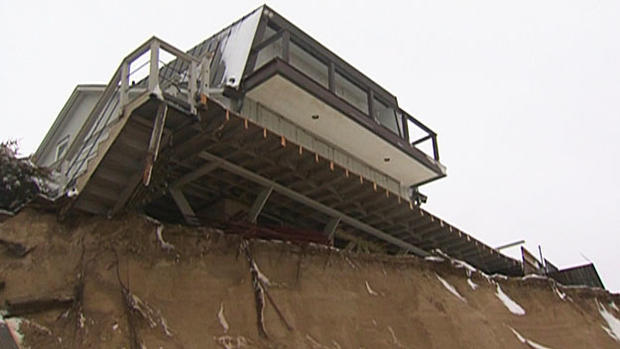Eye On Weather: Preserving The Coastline After A Winter Beating
BOSTON (CBS) - To say that last winter was a stormy one doesn't even come close to doing it justice.
First there was Sandy, then the Blizzard in February and finally countless other powerful Nor'easters with huge helpings of wind and waves.
The end result was a battered and bruised coastline that in some areas were completely rearranged.
One of them was Plum Island.
"We've been losing houses down here for a century," said Doug Packer, the conservation agent with the town of Newbury.
He's been monitoring the erosion there for 20 years.
"When you have multiple tide cycles and you have storm surge that keeps the tide high, those waves will come in and take five feet of dune at a time or more and when you're talking about a couple of hundred feet of dune in front of you, it doesn't take long to get through it," Packer told WBZ-TV.
That presents a huge problem for the residents of Plum Island who are in what seems to be a never ending battle with the sea, trying to keep their homes from falling in.
"During the height of the storm when both of my neighbors' homes were being lost, these pilings on our deck were exposed 20 feet," said Bob Connors.
He was one of lucky ones last winter, his house survived.
The same thing happened at several other beaches, including the Cape Cod National Seashore.
"Last winter carved out the beaches, scooped a lot of sand offshore and as the sand came back and built the beach, it left this river-like feature along the shoreline that sometimes had really fast tidal flow through it and might have seen like an extreme condition that people had never seen before," Mark Adams told WBZ.
Adams helps oversee the preservation of the Cape Cod National Seashore.
"At Marconi Beach in Wellfleet and at Nauset Lake Beach in Eastham, there's kind of a steep drop to the beach. We build stairways there for the public. They got swept away," he said.
The dollars, year after year, really start to add up but there's one local company that may have stumbled on an inexpensive solution.
It's called biomimicry.
"You take a cedar shim, you put it in the sand. When the wind blows, it slows the wind down just a little bit and it starts dropping sand. It's the beginning of a dune," explained Gordon Peabody.
Peabody is the President of Safe Harbors in Wellfleet and they've seen some very encouraging results.
Pointing to a new dune, he said the space was big enough to land an airplane several years ago.
"The ocean was coming through and destroying the marsh every few years and in a time span of just over two years, we were able to gain almost 24, 25 vertical feet here," Peabody said.
And they did it at a fraction of the cost.
"What they're putting in here cost maybe a total of $6. This is going to build the toe of this dune up maybe four, five, six feet this winter."
Safe Harbors has a project now on the North Shore but it's also spreading across the country.
In California, biomimicry is being used to repair a 60-foot dune. There's also a town in Australia trying it out.
MORE LOCAL NEWS FROM CBS BOSTON





